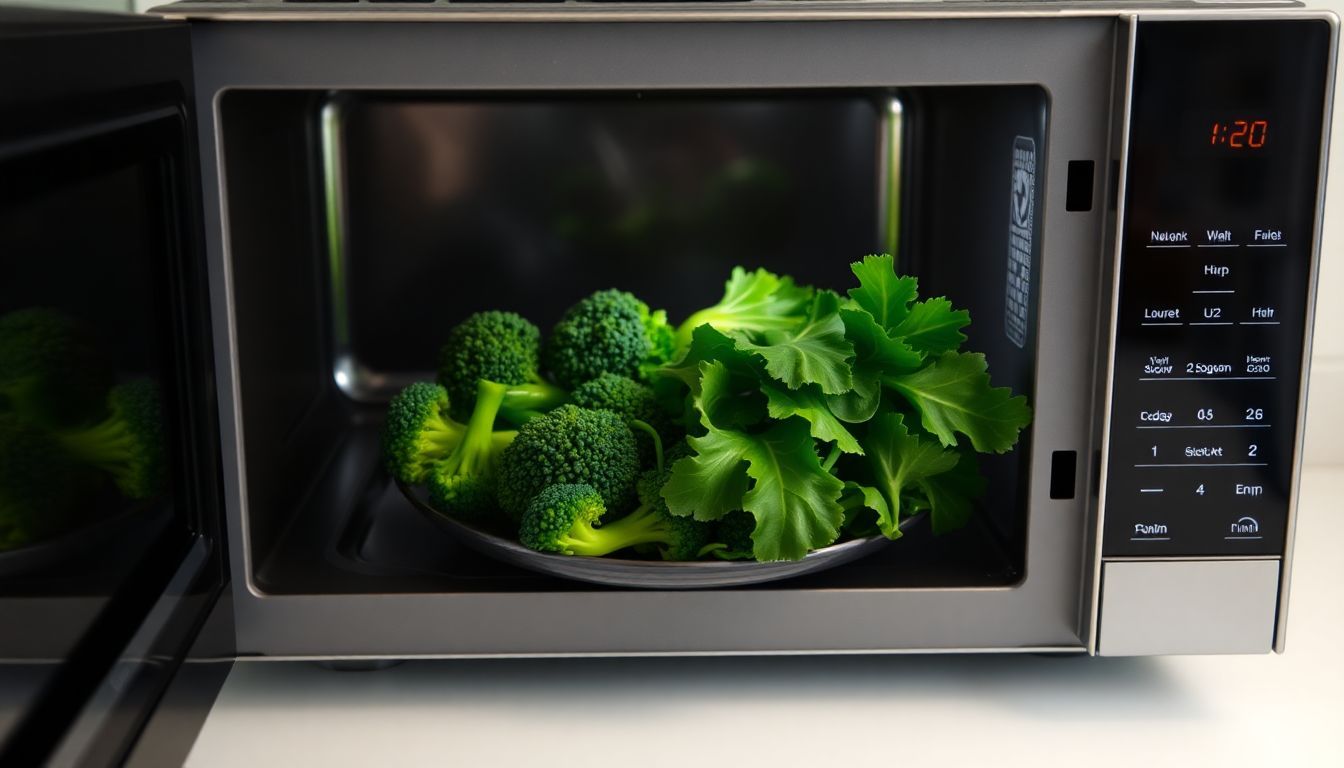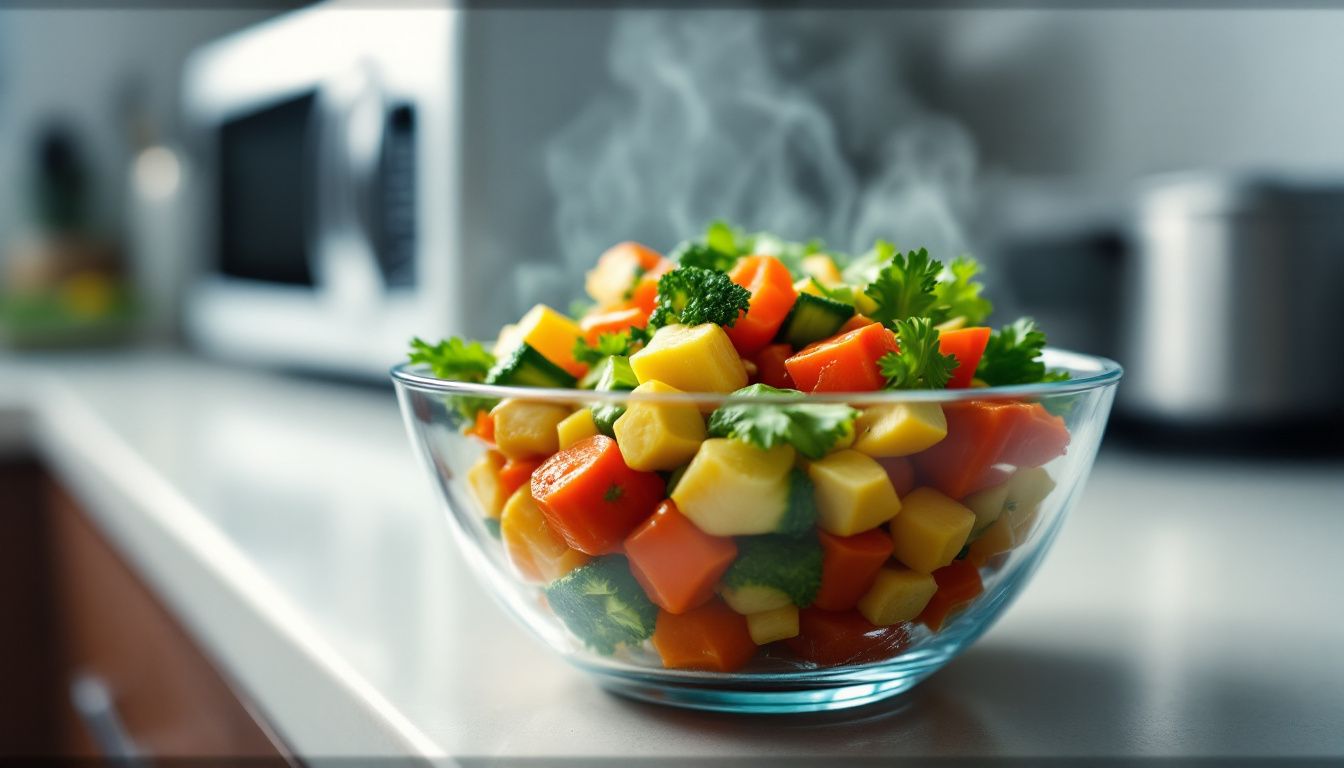Many people worry that microwaving vegetables destroys their nutrients. The good news is, microwave cooking preserves more nutrients compared to boiling or frying. This article explains how different cooking methods impact nutritional value and shares tips to keep your veggies healthy.
Thank you for reading this post, don't forget to subscribe!Keep reading to learn what food science says!
Key Takeaways
- Microwaving preserves more nutrients like Vitamin C compared to boiling, which can cause up to 50% nutrient loss.
- Microwave steaming is better at retaining vitamins and antioxidants than boiling or roasting.
- Hoffman & Zabik (1985) found microwaving broccoli keeps nutrients better than other methods.
- Use minimal water, shorter cooking times, and microwave-safe covers to keep vegetables healthier.
- Cutting veggies larger and avoiding overcooking also help save heat-sensitive nutrients like Vitamin B.
How Microwaving Affects Nutrient Retention in Vegetables
Microwave cooking often preserves more nutrients compared to boiling vegetables. Shorter cooking times and less water help reduce nutrient loss, especially in water-soluble vitamins like vitamin C.
For instance, spinach and broccoli retain over 90% of their vitamin C when microwaved. Boiling these same vegetables can lead to greater nutrient loss due to leaching into the water.
Microwave ovens heat food using electromagnetic waves that target water molecules. This method is both fast and efficient, causing minimal damage to proteins and minerals. Unlike longer methods like grilling or pressure cooking, microwave heating keeps vital nutrients intact by reducing moisture loss.
Microwave steaming works even better at preserving nutrients than boiling in a pot of water or using a conventional oven.
Next: A comparison between microwaving vegetables and other popular cooking methods…

Comparison of Microwaving and Other Cooking Methods
Microwave cooking often gets a bad reputation, but it’s one of the best ways to preserve nutrients in vegetables. Below is a side-by-side comparison of microwaving and other popular cooking methods—so you can see how they stack up.
| Cooking Method | Impact on Nutrients | Key Facts |
|---|---|---|
| Microwaving | High nutrient retention | – Retains water-soluble vitamins like Vitamin C and B. – Short cooking time keeps antioxidants intact. – Hoffman & Zabik study (1985) found broccoli’s nutrients stayed better preserved. |
| Boiling | Significant nutrient loss | – Nutrients like Vitamin C leach into water. – Longer cooking times destroy heat-sensitive vitamins. – May cause up to 50% nutrient loss. |
| Roasting | Moderate nutrient loss | – Exposes vegetables to extended, high heat. – Can destroy nutrients like Vitamin C and folate. – Roasting damages sensitive compounds more than microwaving. |
| Pressure Cooking | Variable nutrient retention | – Retains some antioxidants better than boiling. – Higher pressure and heat can break down certain nutrients. – Often less effective than microwaving or baking. |
| Baking | Good for antioxidants | – Similar to microwaving for antioxidant preservation. – Exposure to heat can damage water-soluble vitamins. – Positive for certain nutrients but varies by vegetable. |
Short cooking times and minimal water make microwaving a smart choice for locking in nutrients. Now, let’s explore ways to do it right in the next section!
Tips for Preserving Nutrients When Microwaving Vegetables
Microwave cooking is quick and easy. To keep vegetables’ nutritional value high, follow these simple tips.
- Use minimal liquid during microwave cooking. Too much liquid can wash away water-soluble nutrients like vitamin C and B vitamins. A splash of water is enough.
- Choose shorter cooking times to avoid heat-sensitive nutrient loss. For example, cook broccoli for 3-5 minutes instead of 10.
- Cut vegetables into larger pieces before placing them in the microwave. This reduces the exposure of nutrients to heat and air.
- Always cover vegetables with a microwave-safe lid or plate. This traps steam, helps cook evenly, and limits moisture loss.
- Let vegetables rest for a minute or two after microwaving. The remaining heat continues cooking while saving more nutrients.
- Start with fresh vegetables for better nutritive quality and flavor retention when cooked in a microwave-safe dish.
- Avoid overcooking by setting timers carefully based on vegetable type and weight to prevent unnecessary nutrient loss.
- Clean your microwave often to reduce food contamination risks during cooking sessions involving multiple ingredients or oils.
Conclusion
Cooking vegetables in the microwave keeps many nutrients intact. It uses shorter cooking times and lower temperatures, which help preserve vitamins. Compared to boiling, microwaving leads to less nutrient loss since fewer nutrients leach into water.
Using microwave-safe containers also ensures safety. To keep your veggies nutritious, stick with this fast and gentle method!
